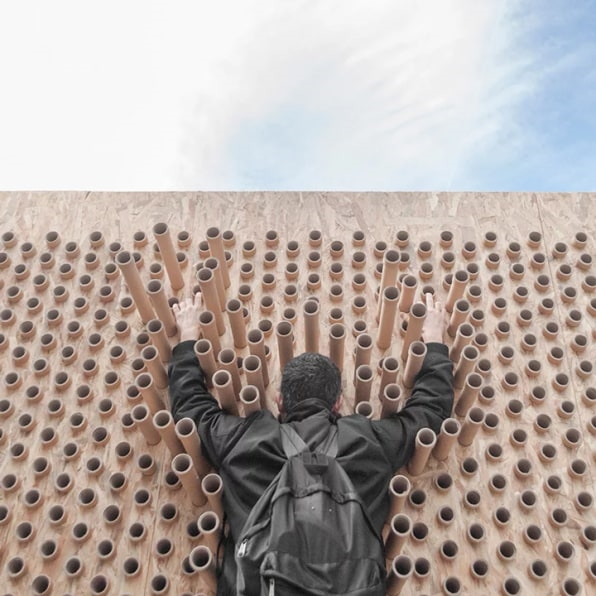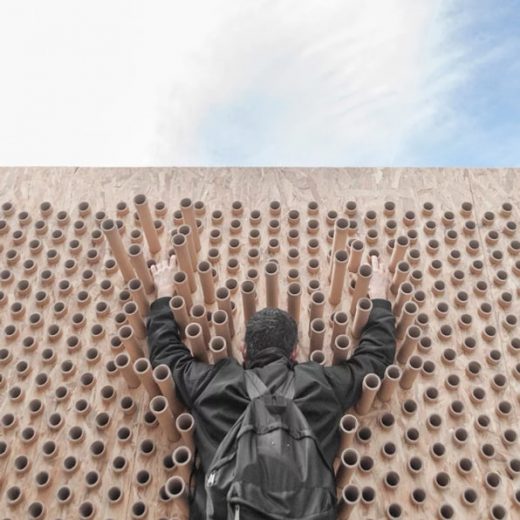Someone built a super-sized pin screen toy
In 1976, contemporary artist Ward Fleming came up with a clever idea. He set hundreds of round-ended metal pins on a boxed grid so that the pins could only move on one axis. Pressing his box against any surface moved each pin independently against the surface’s volume features, effectively creating a 3D model of any object. Pin screens became an instant hit, joining Newton’s Cradles, Drinking Birds, and Magic 8-Balls in the pantheon of useless 1990s toys.
Fleming’s original idea, however, was first implemented on a much larger scale, as an art installation while he was artist-in-residence at San Francisco’s Exploratorium in 1979. You can see Fleming’s 4 x 8-foot, 250,000-pin screen in action below:
Now, a group of Spanish artists is reviving the concept in their own reimagination of the 40-year-old installation–with a fiery twist.
The art studios Nituniyo and Memosesmas came up with the idea after reflecting on the nature of Las Fallas, a festival that honors Saint Joseph every March in Valencia, Spain. During the year leading up to this week of parties, artists from all over Valencia create gigantic sculptural installations using wood and cardboard. These huge pieces, which can tower three stories over partiers, often lambast politicians and celebrities. They get displayed in streets and plazas all over the city until the final day when, amid a hurricane of fireworks, the fallas are set aflame, one by one, while the firefighters watch, ready to act in case the buildings in the city’s close quarters catch fire.
The artists looked at these sculptural statements and decided that perhaps it was time to modernize the concept. “We wanted to make an object that could change its appearance during the five days that it would be displayed on the streets, to convey different messages,” they say over email, “an object that was also susceptible to be manipulated by other artists to transmit their messages and ideas.”
They quickly realized that Fleming’s 1970s pin-screen installation was the answer–and set out to create their own pin art sculpture that could be burned at the end of Las Fallas.
To make an extremely large version of Fleming’s invention, the artists used wood for the box and cardboard for the pins. Because it’s made out of flammable materials, the resolution of their falla is very low. It’s a bit like looking at an 8-bit version of a pin screen. The artists made the frame out of multiple boards of OSB, carefully cut with a CNC machine to create the regular hole pattern. The long cardboard tubes were then inserted inside the holes to create the super-sized pin screen.
The size of the pins means you can’t move them as easily as you might manipulate a regular pin screen. Instead, visitors must manipulate the pins one by one with a plan in mind, which is why the artistic duo asked architect Miguel Arraiz, designer Carlos Tíscar, and illustrator Luis Demano to create some examples, seen in the slideshow above.

Still, this unusual falla–which was burned down on March 19, 2018–was beautiful. In comparison to most fallas, which tend to follow a classic figurative approach, I like the low-res pixel look. Plus, it recaptures the joy of playing with the pin screens of yore, remixing an old tradition in a new way–plus a heavy dose of nostalgia.
Fast Company , Read Full Story
(85)


